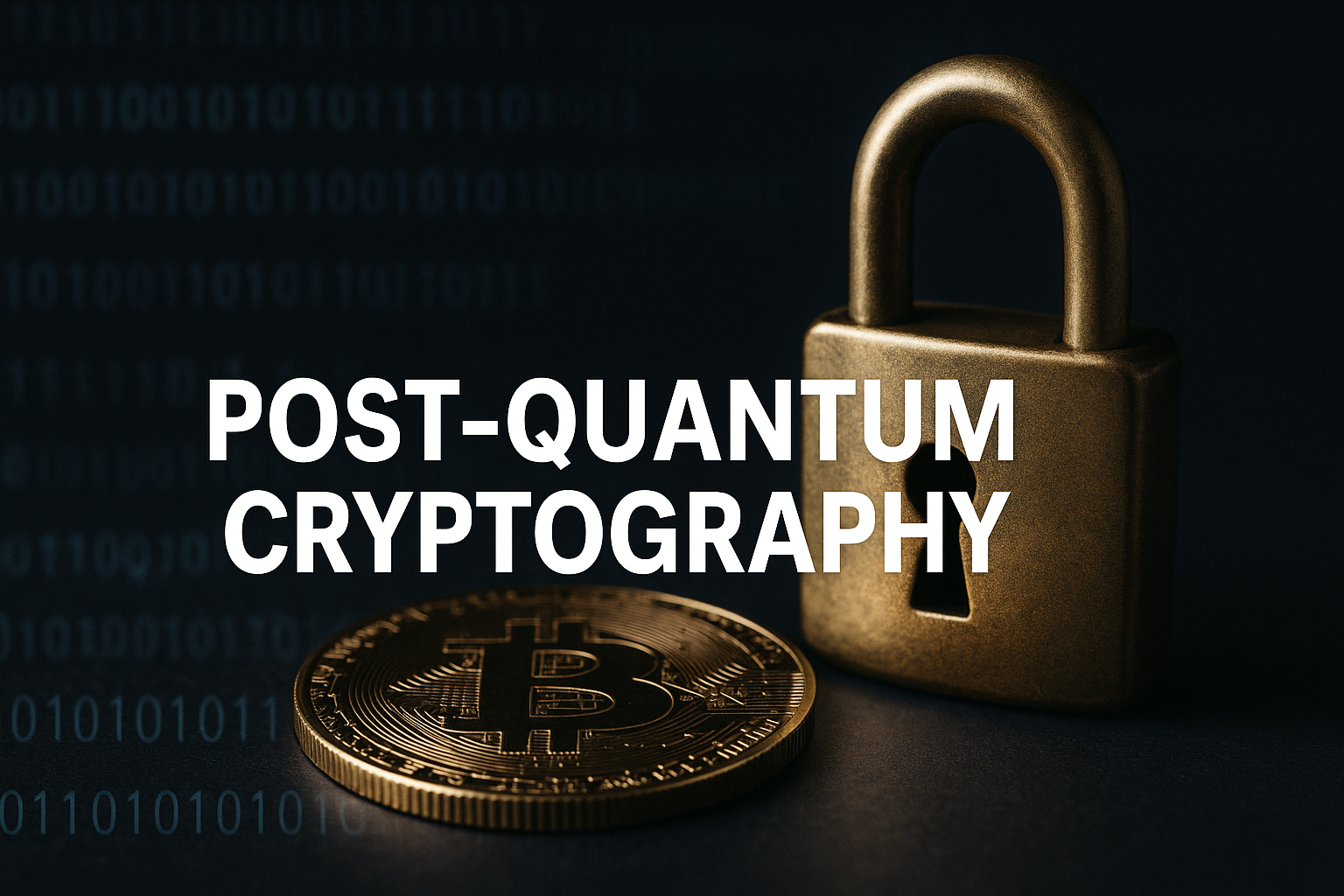
Post-Quantum Cryptography: What It Is, How It Works, and Why It Matters
For decades, the confidentiality and authenticity of digital communication have rested on problems that classical computers cannot efficiently solve. Public-key cryptosystems such as RSA and elliptic-curve cryptography (ECC) underpin banking, secure web browsing, software updates, and identity systems. The prospect of scalable quantum computing challenges these foundations. Post-quantum cryptography (PQC) responds by designing schemes that remain secure against adversaries who control quantum computers while remaining practical on today’s classical hardware.
PQC does not require quantum devices. It is implemented in ordinary software and hardware; the novelty lies in the underlying mathematics chosen to resist known quantum attacks.
1. What is Post-Quantum Cryptography?
Definition. Post-quantum cryptography is the study and deployment of cryptographic algorithms that are believed to be secure against both classical and quantum adversaries. These algorithms are built on mathematical problems for which no efficient (classical or quantum) algorithms are known.
Purpose. The purpose of post-quantum cryptography is preemptive: to replace vulnerable public-key primitives before large quantum computers can break them, thereby protecting long-lived secrets and ensuring continuity of secure communication.
2. Why is Post-Quantum Cryptography Important?
a) Quantum algorithms threaten today’s public keys
RSA and ECC rely on problems (factoring and discrete logarithms) that a sufficiently large quantum computer could solve efficiently (Shor’s algorithm). This would enable key recovery, decryption of past traffic, and signature forgeries.
b) “Harvest now, decrypt later”
Adversaries can store encrypted communications today and decrypt them once quantum capabilities arrive. Records with decades-long confidentiality needs—government data, health, or trade secrets—are at risk unless migration begins early.
c) Strategic and regulatory urgency
Standards bodies (NIST, ETSI, ISO) and major tech vendors are preparing for PQC. Early understanding reduces migration cost and avoids emergency retrofits.
3. How Does Post-Quantum Cryptography Work?
In modern cryptography, we justify security by reducing an attacker’s success to solving a hard mathematical problem. Post-quantum schemes swap the vulnerable problems (factoring, discrete log) for families where no effective quantum speedups are known.
3.1 Hardness assumptions used in PQC
| Family | Core Problem | Why It’s Believed Quantum-Resistant |
|---|---|---|
| Lattice-based | Learning With Errors (LWE), Shortest Vector Problem | Best known attacks are exponential; no analog of Shor’s algorithm applies. |
| Code-based | Decoding random linear codes without secret structure | Attack cost is still superpolynomial with quantum speedups. |
| Multivariate | Solving systems of multivariate quadratic equations | NP-hard in general; quantum algorithms do not yield efficient solutions. |
| Hash-based | Collision/second-preimage resistance of hash functions | Grover’s algorithm only gives quadratic speedup; larger parameters compensate. |
3.2 Design goals for deployable PQC
- Security — sound reductions and extensive cryptanalysis.
- Efficiency — fast key operations on commodity CPUs.
- Compactness — keys/ciphertexts small enough for networks and devices.
- Compatibility — drop-in support for TLS, SSH, IPsec; crypto-agile APIs.
3.3 Example: lattice-based KEM (Kyber-style)
A public key contains structured matrices; encapsulation samples a small random secret and noise, then forms a ciphertext that hides the secret under the Learning-With-Errors assumption. Decapsulation recovers the secret using the private trapdoor. Even with quantum resources, recovering the secret from ciphertext is believed infeasible at recommended parameters.
4. Post-Quantum Cryptography Algorithms List (NIST)
NIST’s ongoing standardization effort selected initial algorithms for public-key encryption/key-encapsulation (KEM) and digital signatures. See the official overview for current status.
4.1 KEMs (encryption/key establishment)
- CRYSTALS-Kyber (lattice) — compact, fast; favored for TLS/VPN usage.
- Classic McEliece (code-based) — very large public keys but strong, long-studied security.
- BIKE, HQC (code-based finalists/alternates) — diversification of assumptions.
4.2 Digital signatures
- CRYSTALS-Dilithium (lattice) — balanced efficiency and sizes.
- Falcon (lattice) — smaller signatures, more complex implementation.
- SPHINCS+ (hash-based) — conservative, stateless hash-based signatures.
| Category | Algorithms | Notes |
|---|---|---|
| Lattice-based | Kyber (KEM), Dilithium (Sig), Falcon (Sig) | Excellent performance; moderate keys/signatures; strong momentum in industry pilots. |
| Code-based | Classic McEliece, BIKE, HQC | McEliece: huge public keys but tiny ciphertexts; decades of analysis. |
| Hash-based | SPHINCS+ | Conservative security; larger signatures; minimal algebraic assumptions. |
| Multivariate | Rainbow (retired), GeMSS (not selected) | Some candidates suffered cryptanalytic breaks during evaluation. |
| Isogeny-based | SIKE (broken) | Recent attacks highlight the need for continual scrutiny. |
5. Post-Quantum Cryptography Example: Hybrid TLS
During transition, many deployments adopt hybrid key exchange: combine a classical scheme (e.g., X25519) with a PQC KEM (e.g., Kyber). Both secrets are derived and then mixed via a key derivation function. If either scheme remains secure, the session key remains secret.
- Client and server send classical and PQC public keys.
- Each side computes a classical shared secret and a PQC shared secret.
- The final key is K = KDF(secret_classical || secret_pqc || transcript).
6. Post-Quantum Cryptography & Computing
PQC is distinct from quantum key distribution (QKD) or other quantum-hardware approaches. PQC runs on ordinary processors and can be deployed through software updates, making it the pragmatic near-term defense against future quantum attacks.
7. Purpose & Ecosystem: Companies, Courses, Projects
7.1 Purpose
- Protect long-lived confidentiality (decades-scale secrets).
- Future-proof internet infrastructure (TLS, VPNs, code signing).
- Enable crypto-agility and reduce emergency migrations.
7.2 Companies & early adopters
- Cloud & browser teams piloting Kyber/Dilithium in TLS.
- Specialist vendors offering PQC IP cores for chips.
- Security consultancies focused on crypto-inventory and migration roadmaps.
7.3 Courses
Universities and training providers now offer post-quantum cryptography courses covering lattice basics, parameter choices, and side-channel safety. Upskilling engineering teams early shortens deployment timelines.
7.4 Projects
National and industrial quantum cryptography projects investigate PQC standardization, hybrid protocols, and testing on constrained devices. Many pair PQC with research into quantum networking to understand interoperability at scale.
8. Challenges in the PQC Transition
| Challenge | Impact | Mitigation |
|---|---|---|
| Key sizes & bandwidth | Larger public keys/ciphertexts can stress IoT and low-bandwidth links. | Choose parameter sets carefully; compress where safe; stage upgrades in bandwidth-rich segments first. |
| Protocol interoperability | Existing protocols need extensions; legacy devices may lack support. | Adopt crypto-agile designs; deploy hybrid handshakes; maintain fallbacks during rollout. |
| Security assurance | Assumptions are newer than RSA/ECC; continual cryptanalysis required. | Follow NIST guidance; track revisions; use vetted libraries with constant-time implementations. |
| Supply-chain & HSM updates | Hardware modules, smart cards, and firmware must be upgraded safely. | Plan phased replacements; test PQC-capable HSMs; ensure code-signing supports new signatures. |
9. Preparing for the Quantum Era (Practical Plan)
- Inventory cryptography. Locate where keys, certificates, and crypto APIs are used across apps, backends, devices, and supply chain.
- Risk-rank data. Identify information needing confidentiality for 10–30 years; prioritize those systems.
- Pilot hybrid deployments. Enable classical + PQC handshakes in test environments; measure performance and packet sizes.
- Engage vendors. Align with libraries and HSM providers following NIST recommendations.
- Educate teams. Enroll engineers in a post-quantum cryptography course; establish coding standards for side-channel safety.
- Design for crypto-agility. Abstract algorithms behind interfaces; keep room for parameter agility and future swaps.
- Communicate timelines. Publish internal milestones; set deprecation dates for legacy algorithms.
10. Perspective
Cryptography evolves in dialogue with computation. As quantum capabilities grow, the discipline adapts: it replaces brittle assumptions, strengthens definitions, and insists on careful proofs and engineering. Post-quantum cryptography is both conservative and forward-looking.
Conclusion
We examined what PQC is, how it works, and why it matters; surveyed the NIST algorithms list; explored a hybrid TLS example; and presented a migration plan. Preparing now safeguards confidentiality, integrity, and trust for the quantum era.
Quick FAQ
Is PQC available today? Yes—libraries implement Kyber, Dilithium, Falcon, and SPHINCS+. Many vendors offer hybrid TLS.
Does PQC require quantum hardware? No—PQC runs on classical computers; it is designed to resist quantum attackers.
Will symmetric crypto be broken by quantum computers? Grover’s algorithm suggests using larger keys (e.g., 256-bit AES) to retain security margins.
Where should I start? Inventory cryptography, pilot hybrids, and follow NIST guidance.
